
My first face-to-face encounter with Millionaire Shortbread was a big disappointment. I’d heard about it on America’s Test Kitchen and thought it sounded amazing. Shortbread, caramel, and chocolate: what’s not to love? So, as a committed food blogger (what I won’t do for my readers!), I used ATK’s recipe and made a batch. With great anticipation, I took my first bite. The chocolate topping was too hard, causing the too soft caramel to ooze out. The cookie ended up kind of falling apart, although it tasted okay. I couldn’t figure out the big fuss over Millionaire Shortbread. UNTIL…..
The Great British Bake-Off had a Millionaire Shortbread challenge. Some of the bakes looked amazing and without the problems I encountered with the chocolate topping and the caramel. So, I went on another food quest to perfect the recipe. (For some reason, my quests are nearly always desserts.)
My goals for the perfect (in my opinion) Millionaire Shortbread:
- Shortbread: I wanted the shortbread base to be the thickest layer and sturdy enough to hold together while eating the cookie.
- Caramel: It should be a little over half the thickness of the shortbread so you can really taste it. It should be soft enough that you can easily bite through it, but not so soft it oozes.
- Chocolate topping: The chocolate should be bittersweet to offset the sweetness of the caramel. But the higher the cacao percentage, the harder the chocolate, making the layer crack as you bite through it. So I ended up blending the chocolate bars. This layer should be about 1/3 of the caramel layer.
NOTE #1: I prefer to use a 19cm x 19cm (7.5″ x 7.5″) pan, measured at the inside base, NOT the top. This gives the Millionaire Shortbread the proper (IMO) overall height of the cookie as a whole. You can, also, use a rectangular pan which has close to the same total area: 361cm (56.25″). If you’ve forgotten your geometry, just multiply the length of one short side by the length of one long side to get the area.
NOTE #2: Millionaire Shortbread needs to be made the day before serving so it has plenty of time to set. It keeps for days on the counter and freezes well!
MILLIONAIRE SHORTBREAD
Shortbread
- 294g (2.5 cups) all-purpose flour
- 99g (1/2 cup) granulated sugar
- 3/4 tsp table salt
- 3/4 tsp vanilla
- 226g (1 cup) butter, melted
Caramel
- 473g (2 cups) cream
- 200g (7 oz) light brown sugar
- 34g (2T) light corn syrup
- 1/4 tsp table salt
- 1.5 tsp vanilla
Chocolate Topping
- 59g (2 oz) 60% cacao chocolate bar
- 115g (4 oz) 72% cacao chocolate bar
_________________________________________________________________________________________________________
Preheat oven to 177°C (350°F)
Line the bottom and sides of a 19cm x 19cm (7.5″ x 7.5″) pan (I use a Pyrex glass pan). Lining the pan is NOT mandatory, but it allows you to remove the entire Millionaire Shortbread block at once, thus making the slicing process easier and more attractive.

Shortbread
- 294g (2.5 cups) all-purpose flour
- 99g (1/2 cup) granulated sugar
- 3/4 tsp table salt
- 3/4 tsp vanilla
- 226g (1 cup) butter, melted
In a bowl, mix together the flour, sugar, salt, and vanilla. Pour in the melted butter and blend with a fork, just until the flour is incorporated.

Break up the dough into pieces and scatter them evenly in the baking pan.
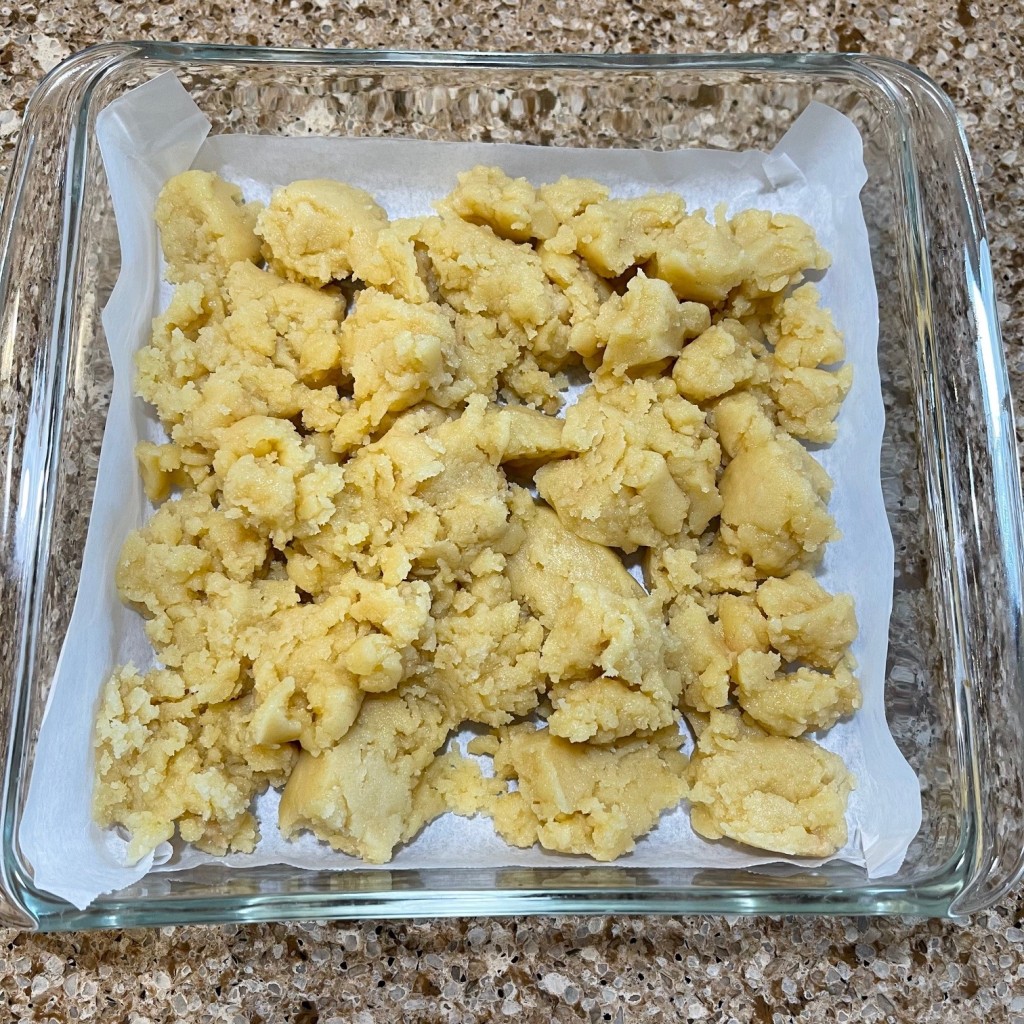
With your fingers, press the dough to an even depth. As an added measure, use a flat bottomed surface (such as a glass or offset spatula) to firmly press out the finger marks. Finally, go around the edges to press down the dough that may have risen up at the edge. The entire surface should be as level as possible.

Bake the shortbread in the preheated 177°C (350°F) oven until lightly browned – about 25-30 minutes. Remove from oven, then take an offset spatula or a fork and lightly press down the entire surface to compact the dough – you want the shortbread to be sturdy and not fall apart.

Let shortbread cool while you make the caramel.
Caramel
- 473g (2 cups) cream
- 200g (7 oz) light brown sugar
- 34g (2T) light corn syrup
- 1/4 tsp salt
- 1.25 tsp vanilla
Caramel can be daunting, but follow my instructions to the letter, and you should have no problems.
NOTE #1: Plan about 25-30 minutes to be near the stove – caramel needs to be stirred often.
NOTE #2: You’ll need a metal or glass thermometer that can attach to the side of the pan – plastic will soften due to the hot steam.
NOTE #3: As the temperature rises, you’ll notice the number bounces around like a roller coaster. This is normal.
Into a sturdy saucepan, put the cream, brown sugar, corn syrup, and salt. Attach the thermometer so the tip doesn’t touch the bottom of the pan, but is still immersed in the liquid. Turn the flame to med/high and stir. The temperature is going to rise fairly steadily, fluctuating a few degrees up and down, until it gets towards the boiling point of water (100°C / 212°F). The temperature will bounce around here for about 15 minutes. THEN, it will begin to rise to the desired 115°C (239°F).
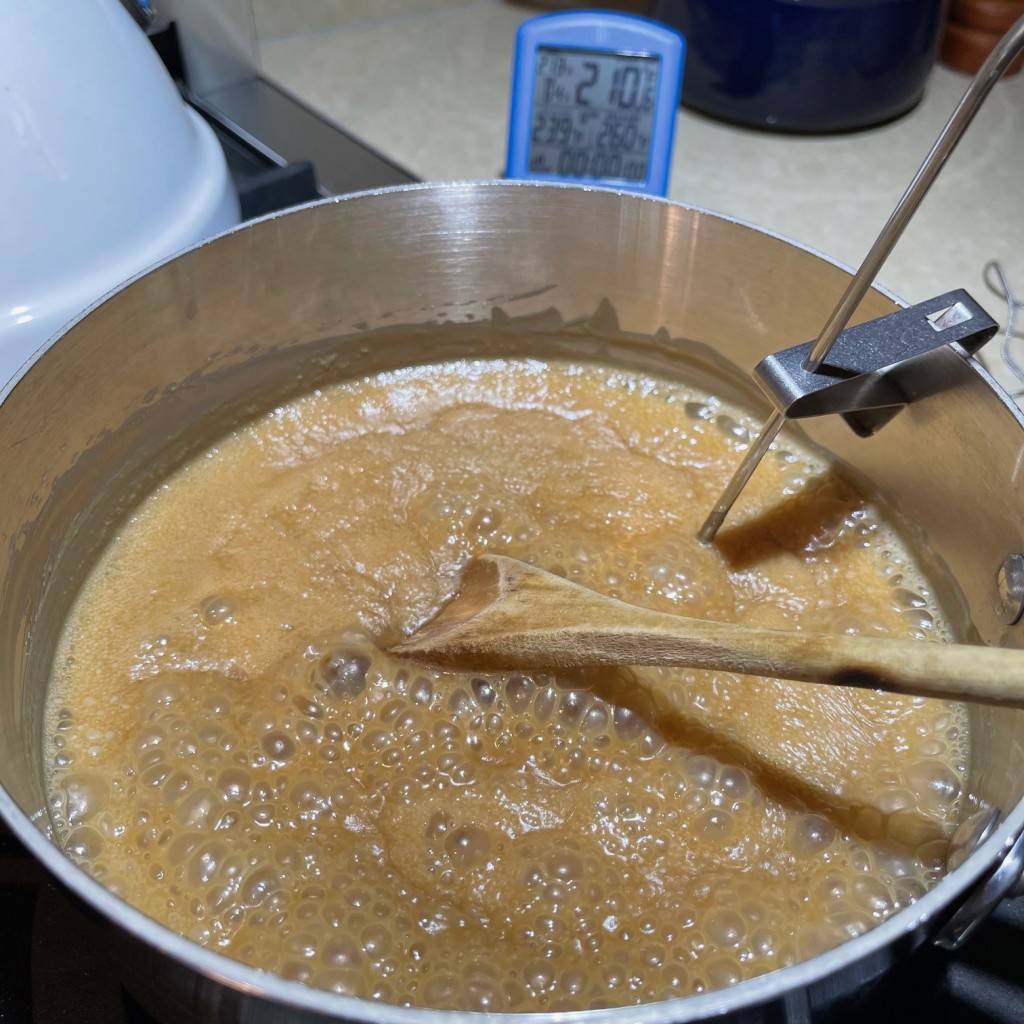
As the caramel nears the end point, you’ll notice it looks like melted peanut butter. Keep your eye on the temperature because it will happen soon. As soon as you see 115°C (239°F) – even if it lowers again – remove the pan from the heat. Stir in the vanilla.

Pour the hot caramel on the shortbread, spreading it evenly. Let cool about 20 minutes, then make the chocolate topping.

Chocolate Topping
After the caramel layer has cooled about 20 minutes, make the chocolate topping. You want the caramel to still be warm when you pour on the hot chocolate so the two layers stick together.
- 59g (2 oz) 60% cacao chocolate bar (I use Ghiradelli)
- 115g (4 oz) 72% cacao chocolate bar (I use Ghiradelli)
Break up the chocolate into small pieces and place in small saucepan. Over medium/low heat, melt chocolate, stirring often.

Once the chocolate is completely melted (no lumps), pour over warm caramel and smooth evenly. Let set several hours on the counter. Then set in fridge for a final set.

Fleur de Sel option
If you want to top the chocolate with fleur de sel, wait until the chocolate is no longer hot or the salt will melt. This can take a couple of hours – set it in the fridge, if you like, but don’t let it harden – the chocolate needs to be semi-soft so the salt will stick.
The next day, remove the Millionaire Shortbread from the fridge and let set on the counter for, at least, an hour. Run a rounded tipped knife between the baking paper and the pan. Then, pick up the block by the baking paper and set it on a cutting board. Carefully peel the paper from the sides and bottom.
I like to slice off the edges so the cut bars have clean sides, but it’s not mandatory. Of course, those removed edges don’t go to waste – everyone clamors for them, just to be sure the Millionaire Shortbread is up to par.

Cut into squares or rectangles using a long NON-serrated knife, pressing straight down with a SLOW rocking motion.

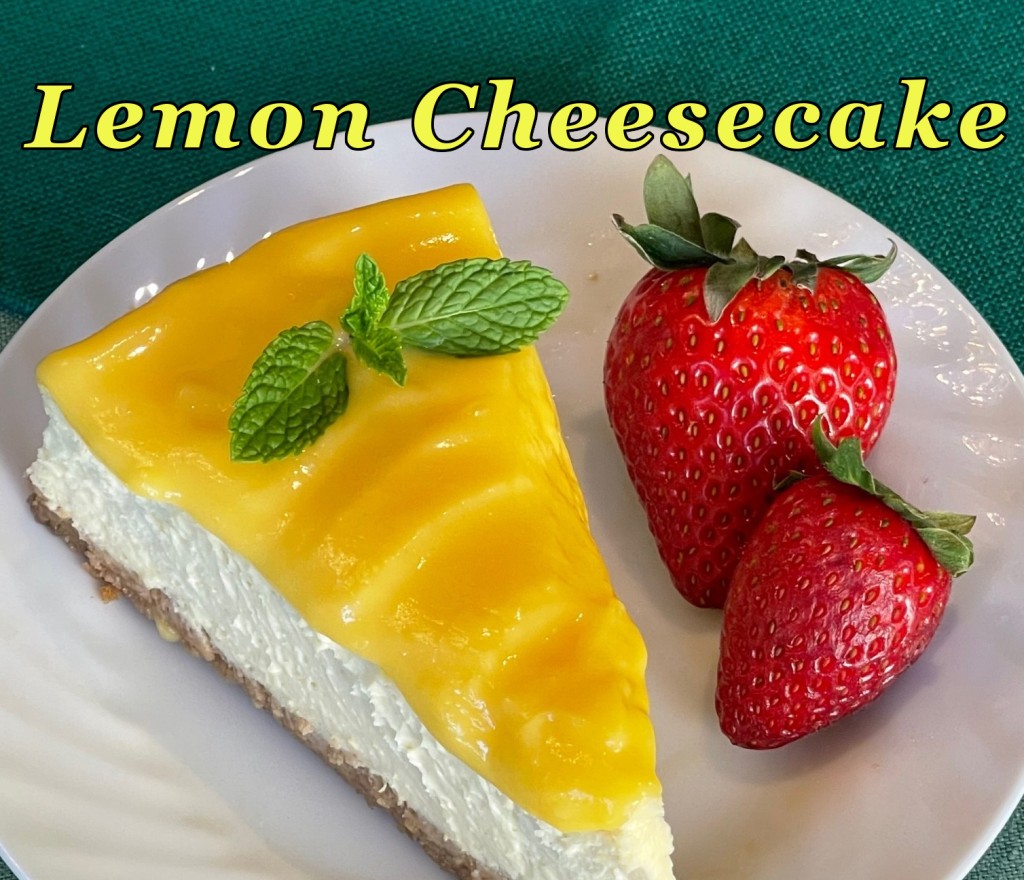


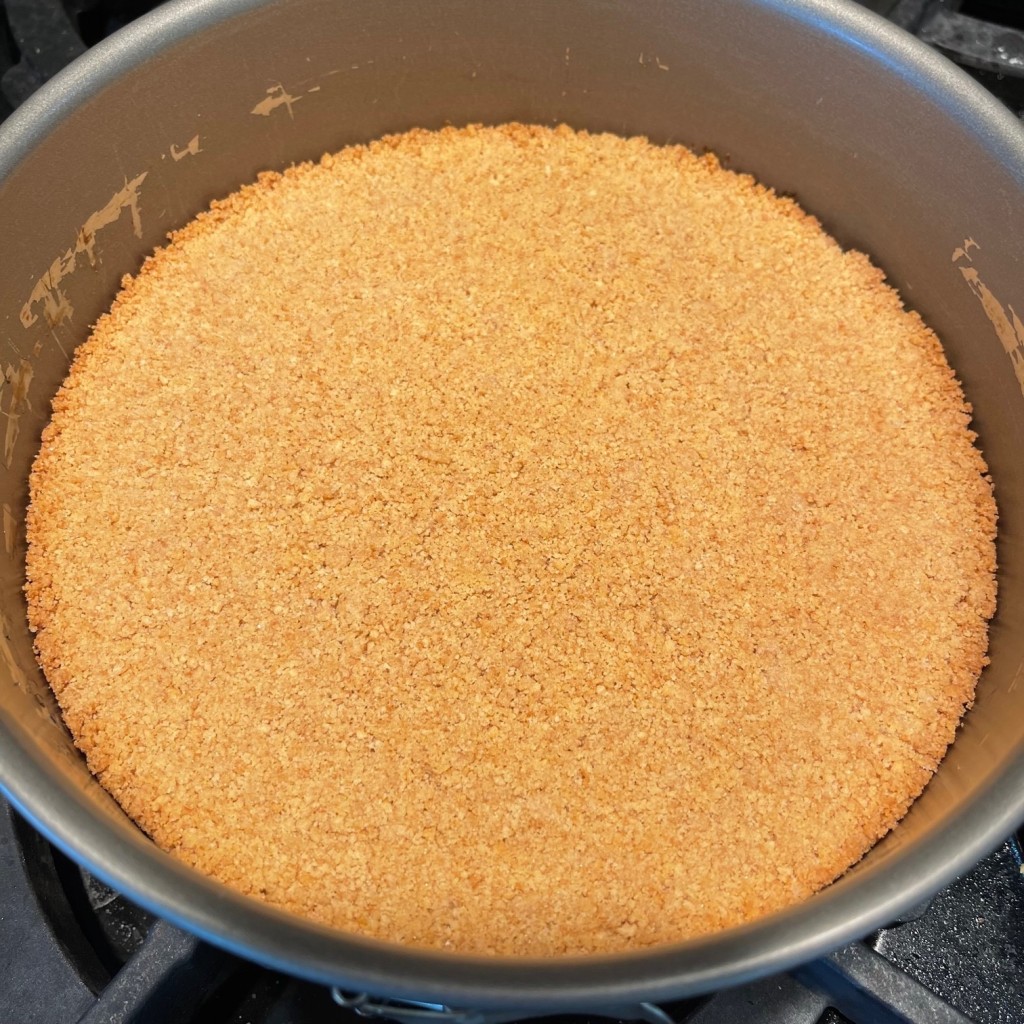


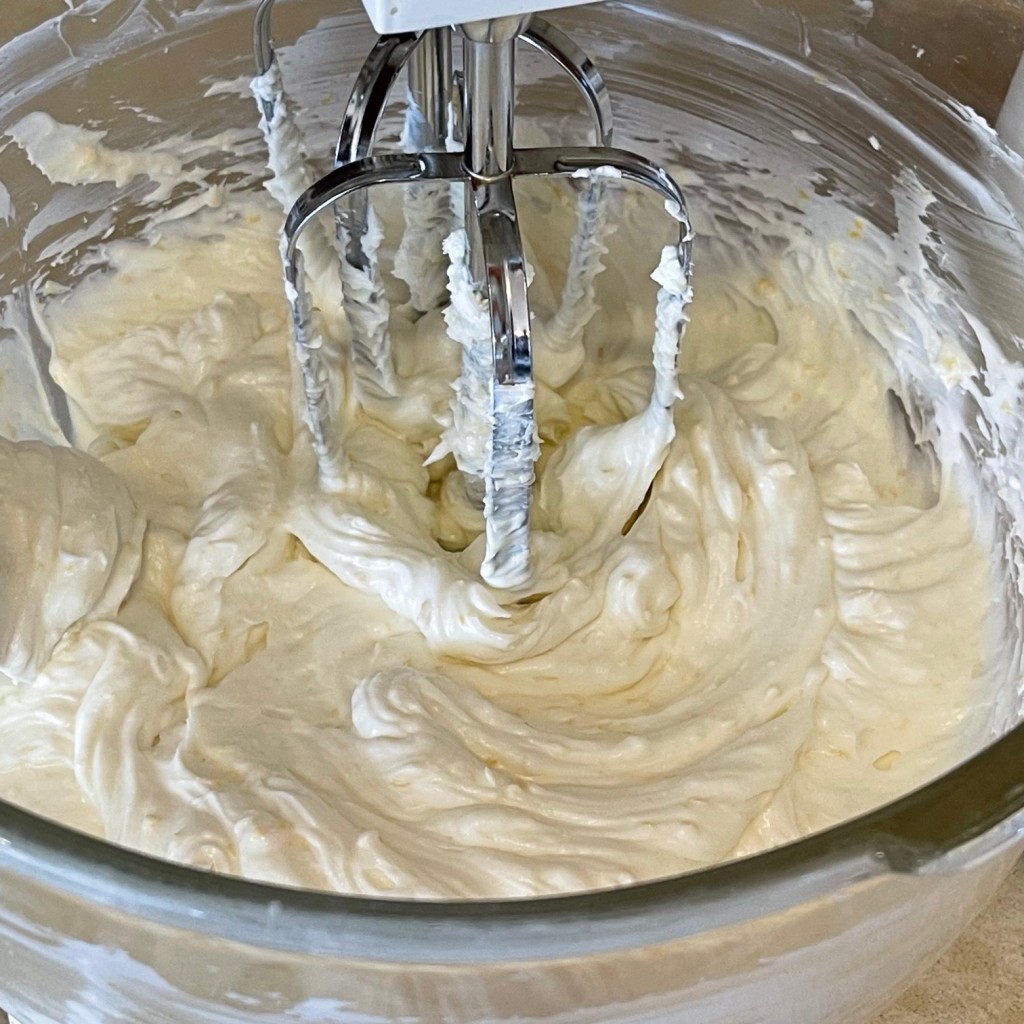





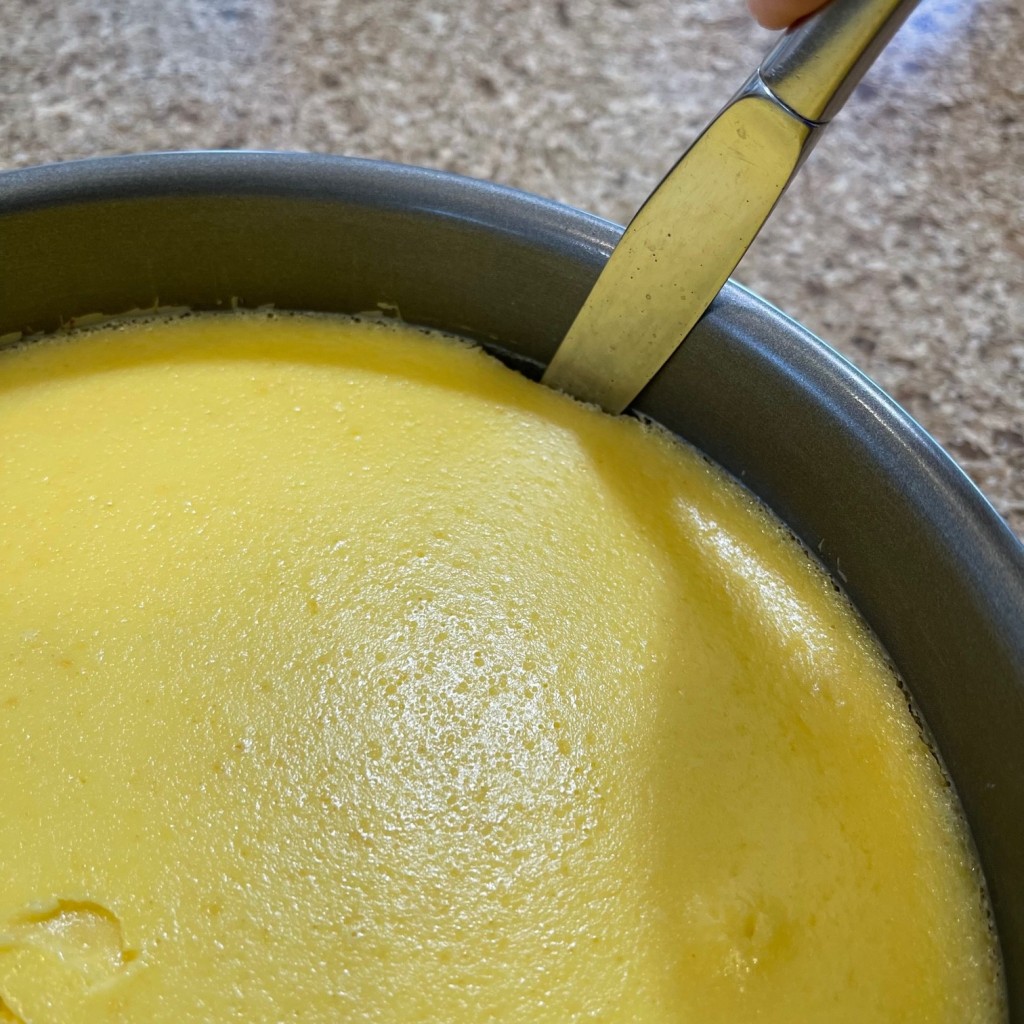

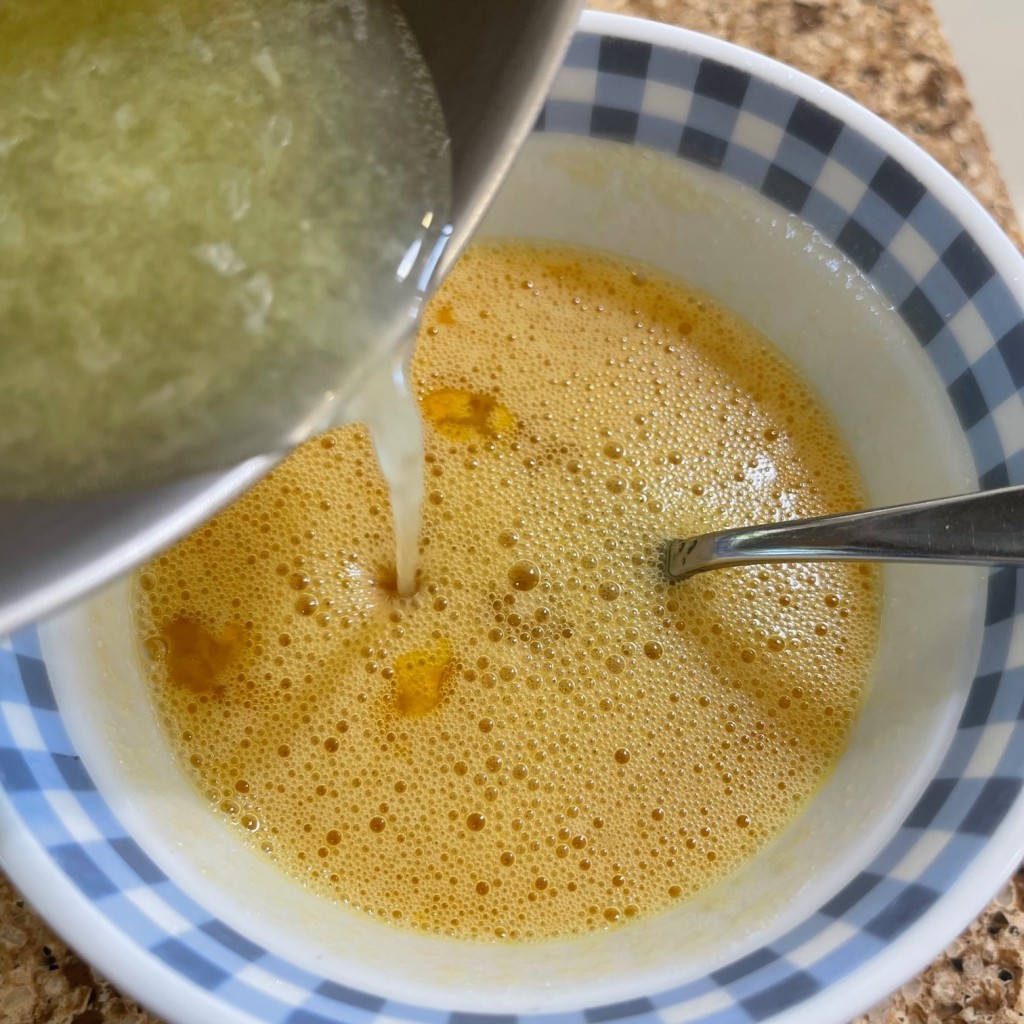
































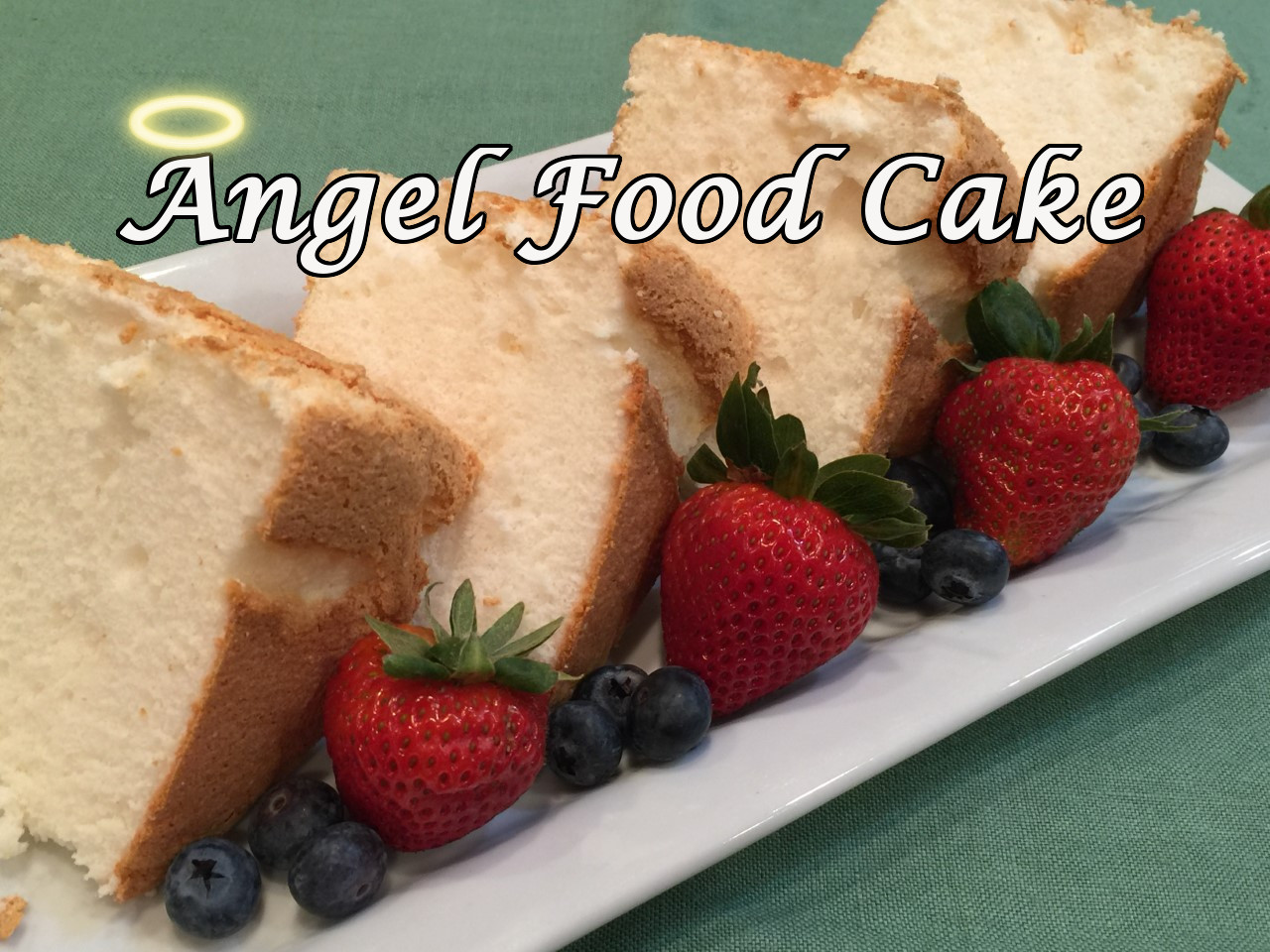 Due to my frugal nature (some may say, ‘cheap’), I found myself with an abundance of frozen egg whites. It turns out there are many more recipes that call for an extra egg yoke than an extra egg white. Due to my aforementioned frugal nature, I froze the unused whites rather than throw out perfectly good food.
Due to my frugal nature (some may say, ‘cheap’), I found myself with an abundance of frozen egg whites. It turns out there are many more recipes that call for an extra egg yoke than an extra egg white. Due to my aforementioned frugal nature, I froze the unused whites rather than throw out perfectly good food.
 Into a bowl, sift together the cake flour and 5 oz (3/4 cup) of the sugar. Set aside.
Into a bowl, sift together the cake flour and 5 oz (3/4 cup) of the sugar. Set aside. With the mixer still running on medium, start adding the sugar/cream of tartar mixture to the whites 1 tablespoon at a time.
With the mixer still running on medium, start adding the sugar/cream of tartar mixture to the whites 1 tablespoon at a time.  Once all the sugar/tartar has been added, increase mixer speed to high until soft peaks form. Turn off machine, pour in the vanilla mixture, then quickly mix together on low.
Once all the sugar/tartar has been added, increase mixer speed to high until soft peaks form. Turn off machine, pour in the vanilla mixture, then quickly mix together on low.  Here’s where your jaw may drop. If you read other angel food cake recipes, they’ll tell you to FOLD in the flour mixture gently in order not to deflate the meringue. I’m here to tell you that you don’t have to bother. Simply add 3 T of the flour mix to the batter through a sieve, then turn your mixer on the lowest speed for a few seconds to incorporate the flour, running a spatula along the sides and bottom of the bowl.
Here’s where your jaw may drop. If you read other angel food cake recipes, they’ll tell you to FOLD in the flour mixture gently in order not to deflate the meringue. I’m here to tell you that you don’t have to bother. Simply add 3 T of the flour mix to the batter through a sieve, then turn your mixer on the lowest speed for a few seconds to incorporate the flour, running a spatula along the sides and bottom of the bowl. Turn off the mixer, then add another 3 T flour to the batter, turn on the machine to low and mix to incorporate for a few seconds. Continue until all the flour is added and incorporated.
Turn off the mixer, then add another 3 T flour to the batter, turn on the machine to low and mix to incorporate for a few seconds. Continue until all the flour is added and incorporated. Put into the oven and bake about 45-50 minutes – until golden brown and cake springs back when you press it with your finger.
Put into the oven and bake about 45-50 minutes – until golden brown and cake springs back when you press it with your finger. Remove from oven and immediately turn upside-down. Let cake remain like this until completely cooled – about 3 hours.
Remove from oven and immediately turn upside-down. Let cake remain like this until completely cooled – about 3 hours. 
 I’ve been on another quest. (For some reason, my quests usually involve chocolate.) This time I was on a search for the perfect brownie recipe.
I’ve been on another quest. (For some reason, my quests usually involve chocolate.) This time I was on a search for the perfect brownie recipe.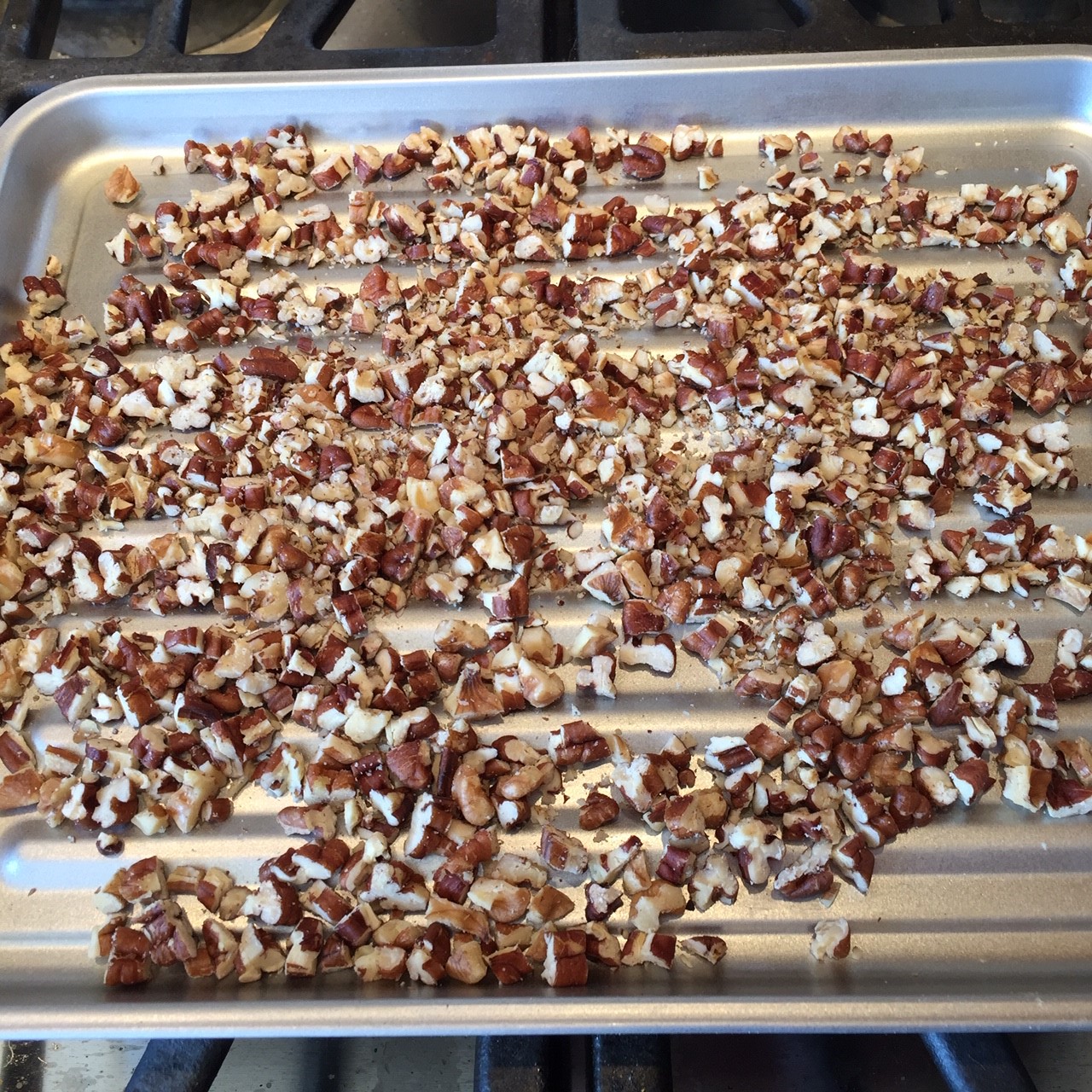
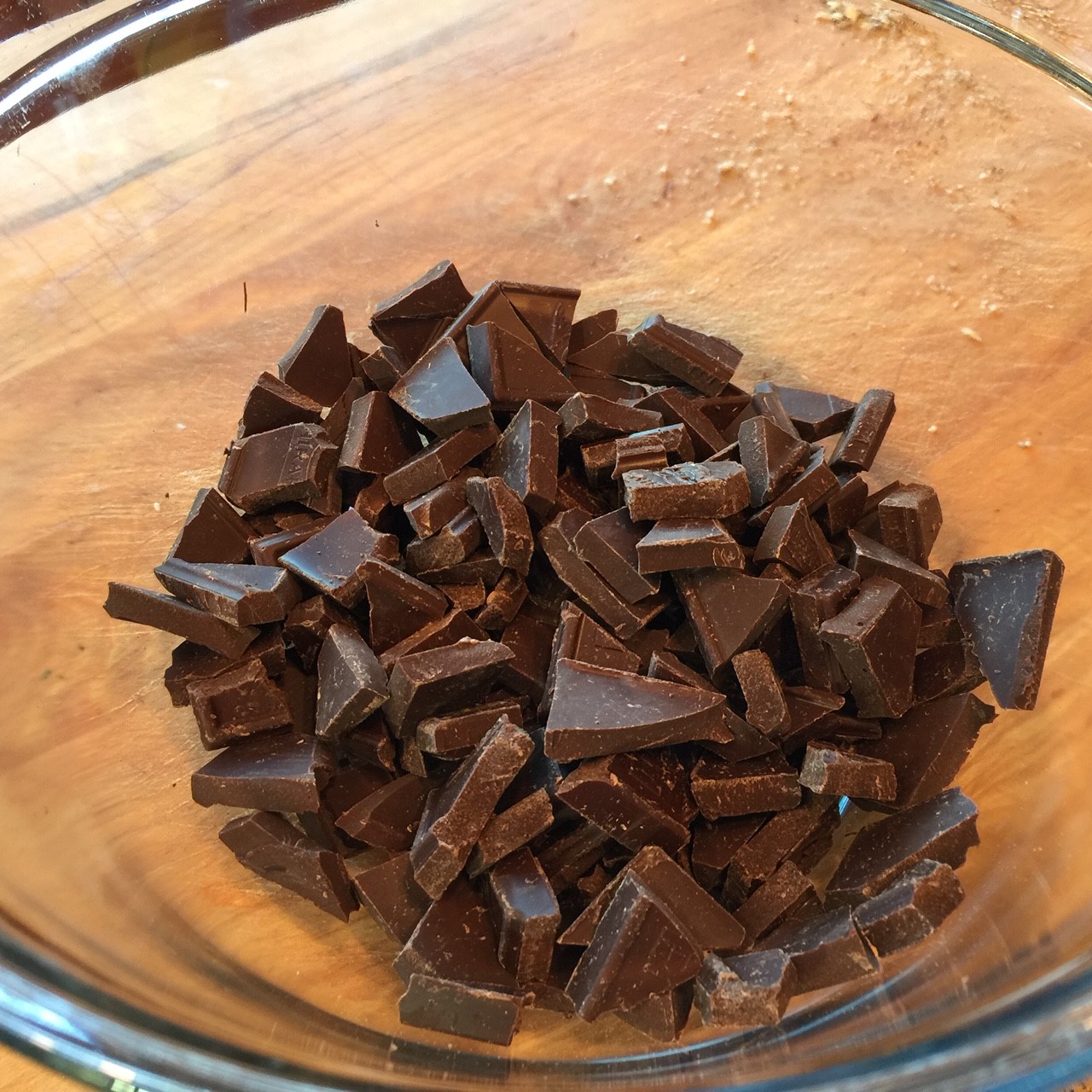
 Immediately pour hot liquid into bowl with chocolate, stirring to melt chocolate completely. Allow to cool 10 minutes, stirring now and then. (You’re going to be adding eggs, and don’t want to cook them.)
Immediately pour hot liquid into bowl with chocolate, stirring to melt chocolate completely. Allow to cool 10 minutes, stirring now and then. (You’re going to be adding eggs, and don’t want to cook them.)
 Beat the eggs in a small bowl. Once the chocolate mixture has cooled, stir in approximately half of the eggs and mix in completely. Pour and mix in the remaining egg. Stir in the vanilla.
Beat the eggs in a small bowl. Once the chocolate mixture has cooled, stir in approximately half of the eggs and mix in completely. Pour and mix in the remaining egg. Stir in the vanilla. Add in the flour mixture, pecans, and mini chocolate chips. Mix just until all the flour has been incorporated.
Add in the flour mixture, pecans, and mini chocolate chips. Mix just until all the flour has been incorporated. 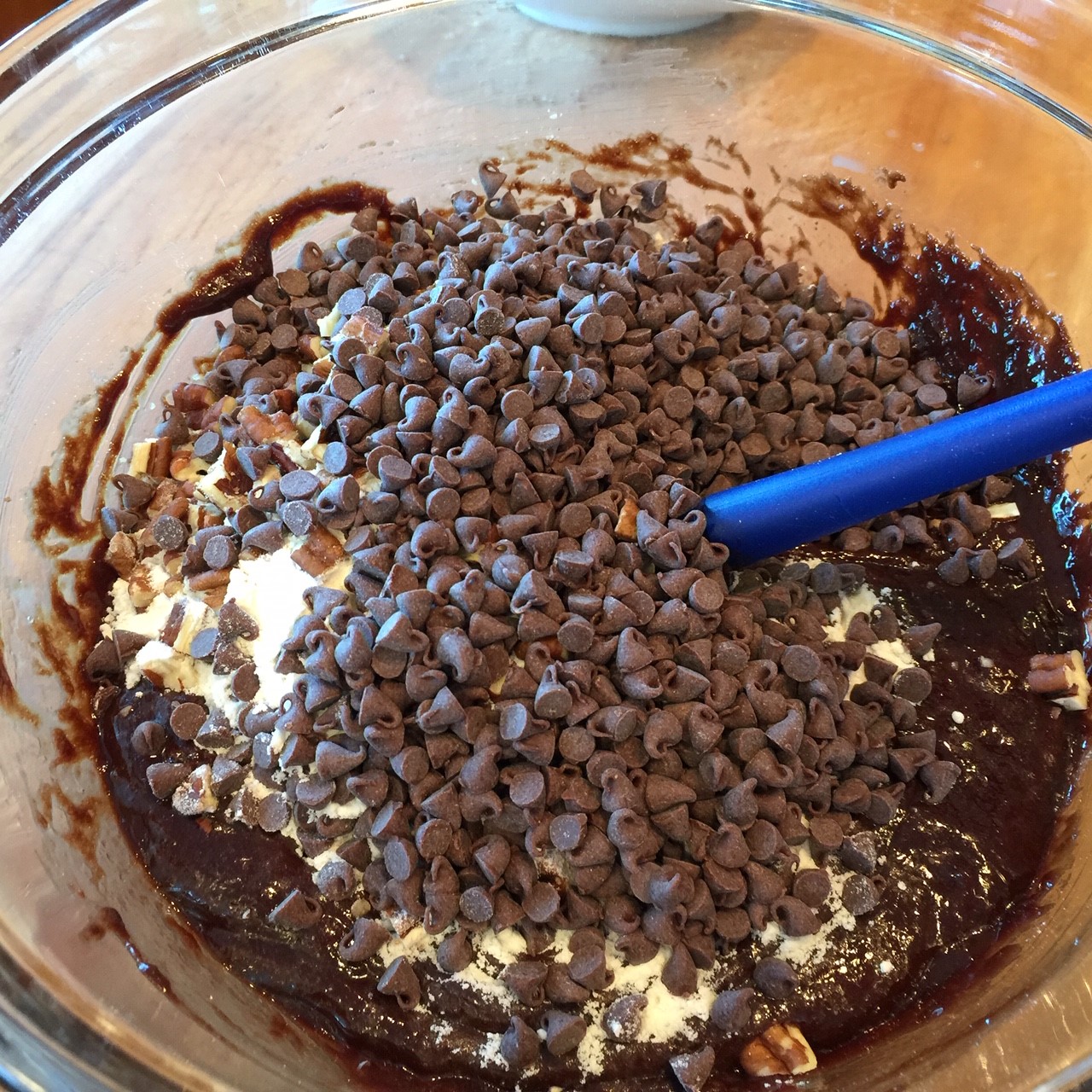 Pour into prepared baking pan, smoothing batter flat. If desired, sprinkle on fleur-de-sel.
Pour into prepared baking pan, smoothing batter flat. If desired, sprinkle on fleur-de-sel. Bake at 325º F for about 28 minutes. (They start to look done at around 25 minutes in my oven, but I let them go a few minutes more – otherwise they’ll sink too much as they cool and be a little too gooey for my taste.)
Bake at 325º F for about 28 minutes. (They start to look done at around 25 minutes in my oven, but I let them go a few minutes more – otherwise they’ll sink too much as they cool and be a little too gooey for my taste.) Remove from oven and let brownies completely cool several hours before cutting. (This takes a LOT of self-control!!) Note: They’ll still sink a little at 28 minutes, but not as much as they would at 25 minutes.
Remove from oven and let brownies completely cool several hours before cutting. (This takes a LOT of self-control!!) Note: They’ll still sink a little at 28 minutes, but not as much as they would at 25 minutes. I’m not sure when it happened but, for better or worse, every year new foods become pumpkin flavored during Autumn.
I’m not sure when it happened but, for better or worse, every year new foods become pumpkin flavored during Autumn. In a small bowl, whisk together the egg, pumpkin, milk, and vanilla. Pour the wet ingredients into the dry and gently fold to mix.
In a small bowl, whisk together the egg, pumpkin, milk, and vanilla. Pour the wet ingredients into the dry and gently fold to mix.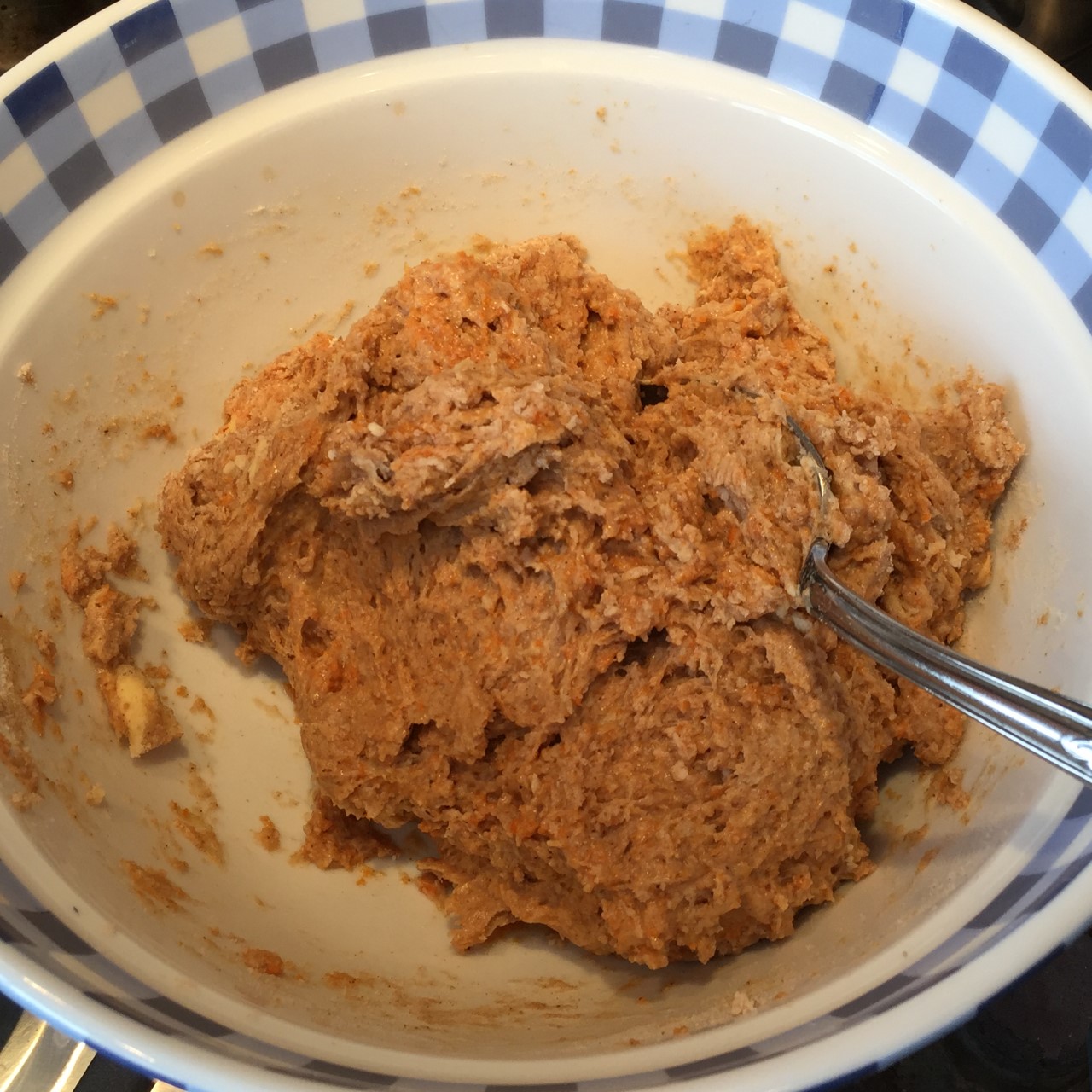 Empty onto a well-floured counter and knead about 5 or 6 times. (I use a bench scraper to help since the dough is sticky.)
Empty onto a well-floured counter and knead about 5 or 6 times. (I use a bench scraper to help since the dough is sticky.)  With floured fingers, pat dough into an 8″ circle (try to keep the dough to an even thickness) and cut into 8 wedges.
With floured fingers, pat dough into an 8″ circle (try to keep the dough to an even thickness) and cut into 8 wedges.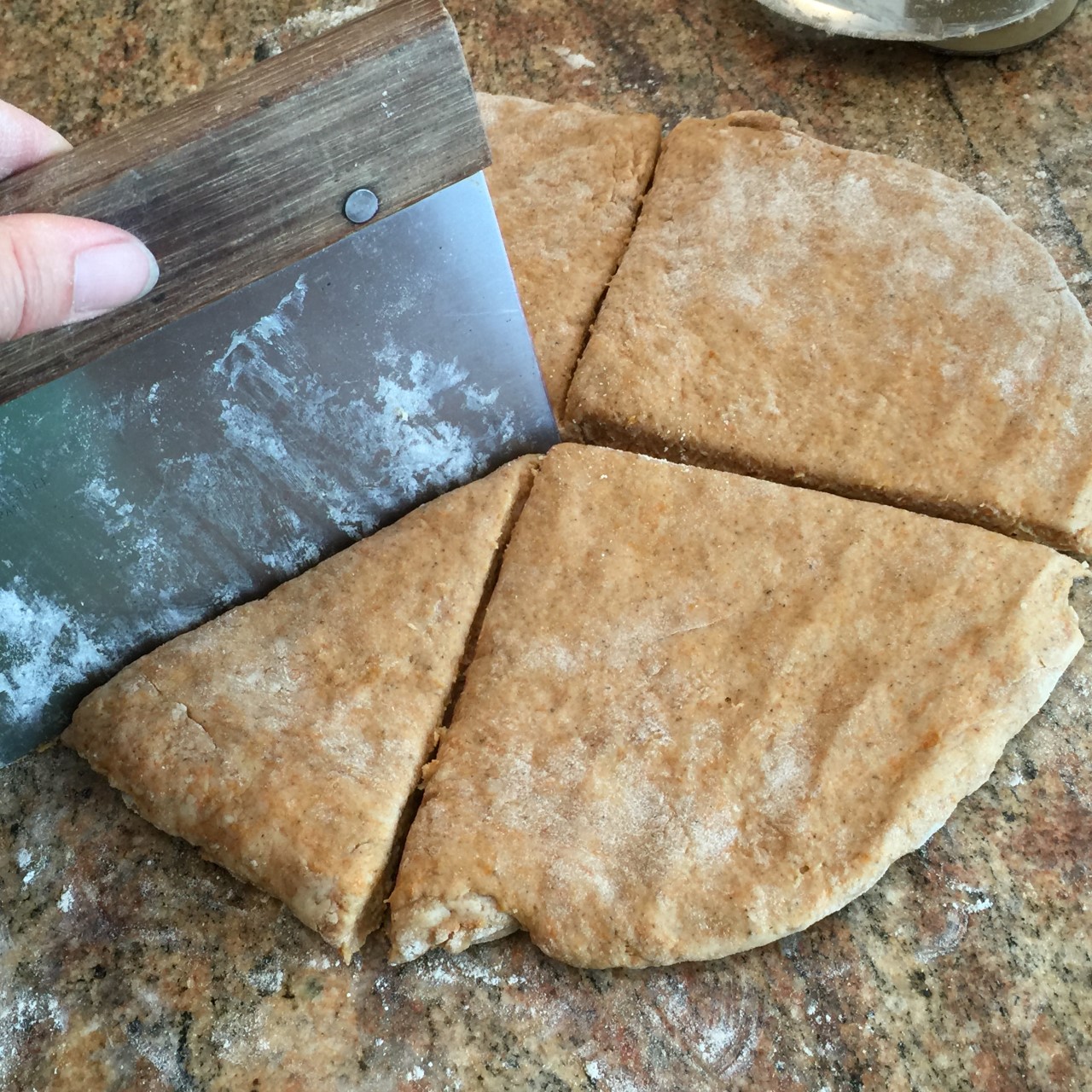 Place on a greased or parchment lined cookie sheet (I prefer a dark sheet that’s greased.)
Place on a greased or parchment lined cookie sheet (I prefer a dark sheet that’s greased.) Bake at 400º F with the rack in the middle position for about 16 minutes. They’re at their best when they’re slightly dark on the bottom.
Bake at 400º F with the rack in the middle position for about 16 minutes. They’re at their best when they’re slightly dark on the bottom.  The last time I baked them, I thought I overcooked them (see photo), but they were amazing – a slight crunch on the outside and perfect chew inside. So when you check them for doneness, look for slightly dark sides.
The last time I baked them, I thought I overcooked them (see photo), but they were amazing – a slight crunch on the outside and perfect chew inside. So when you check them for doneness, look for slightly dark sides.  Then remove from oven onto wire rack to completely cool before icing.
Then remove from oven onto wire rack to completely cool before icing.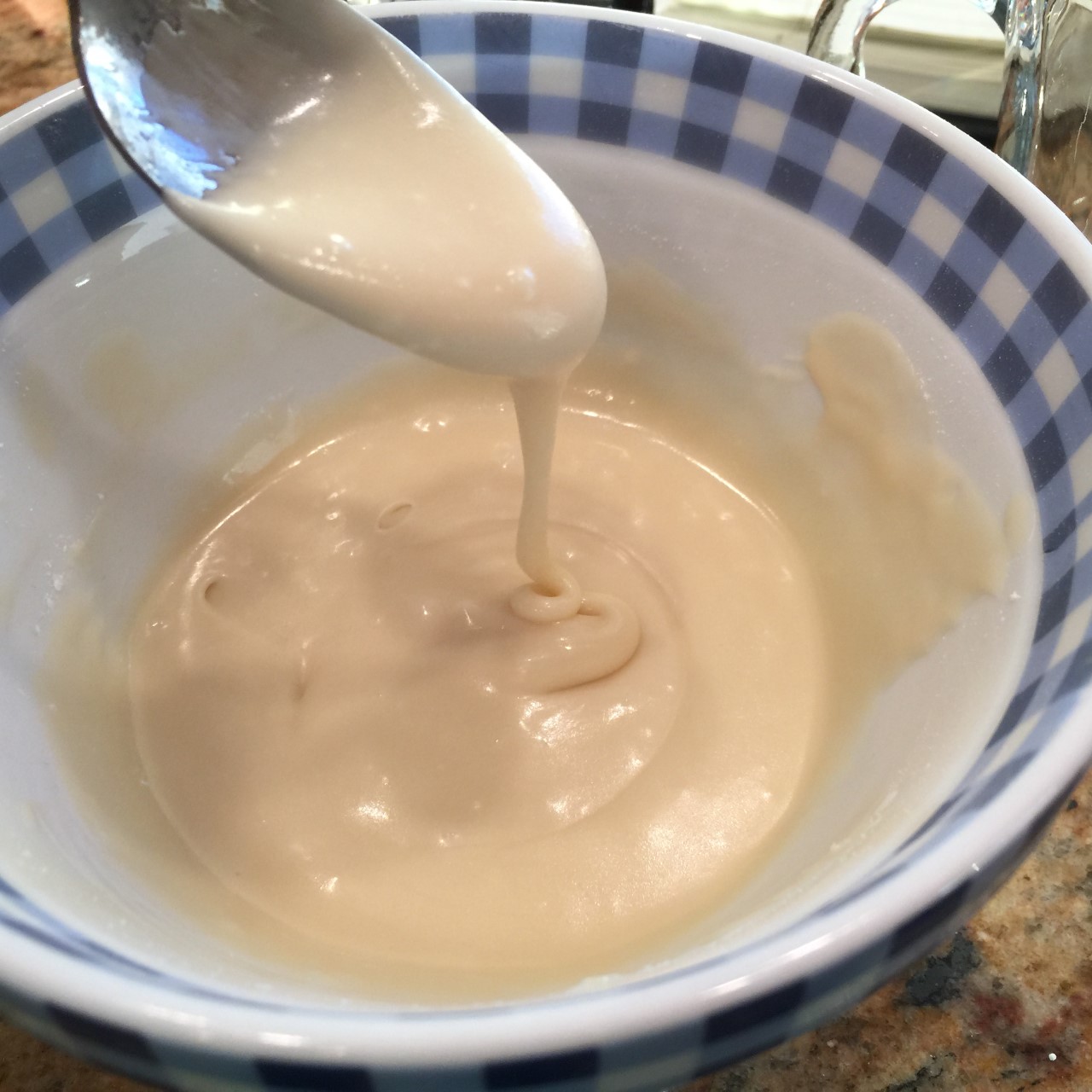 For easier control over the drizzle, pour icing into a spouted cup or a pastry bag with a small circle tip. Design as you wish.
For easier control over the drizzle, pour icing into a spouted cup or a pastry bag with a small circle tip. Design as you wish. Allow icing to harden before serving.
Allow icing to harden before serving. My introduction to Morovian Sugar Cake was a little bittersweet.
My introduction to Morovian Sugar Cake was a little bittersweet.
 Add in 84g (6 T) butter and eggs. Process to blend.
Add in 84g (6 T) butter and eggs. Process to blend. With machine running, pour in the proofed yeast water.
With machine running, pour in the proofed yeast water. 
 Add 400g (3½ cups) to processor and blend. Add flour 25g (¼ cup) at a time, processing after each, until dough starts pulling away from sides of the work bowl. Stop adding flour, and run machine another 30 seconds to knead the dough. Empty dough onto a floured surface and knead a few times to bring together.
Add 400g (3½ cups) to processor and blend. Add flour 25g (¼ cup) at a time, processing after each, until dough starts pulling away from sides of the work bowl. Stop adding flour, and run machine another 30 seconds to knead the dough. Empty dough onto a floured surface and knead a few times to bring together. 


 After dough has risen, create pockets with your fingertip, the handle of a wooden spoon, or something else that’s about 1/2″ diameter.
After dough has risen, create pockets with your fingertip, the handle of a wooden spoon, or something else that’s about 1/2″ diameter. Sprinkle the sugar topping over the entire cake. Drizzle the remaining 84g (6 T) melted butter over all.
Sprinkle the sugar topping over the entire cake. Drizzle the remaining 84g (6 T) melted butter over all.  Bake at 350º F for about 20 minutes, until golden brown.
Bake at 350º F for about 20 minutes, until golden brown.  Cool at least 5 minutes before serving.
Cool at least 5 minutes before serving. My mother used to love to buy lady’s club cookbooks. You know the ones – they’re made up of the members favorite recipes. Once I left home, she would buy them for me, too. This was years before the internet. Back then, we had to rely on cookbooks, magazines, and recipes passed on from friends and family.
My mother used to love to buy lady’s club cookbooks. You know the ones – they’re made up of the members favorite recipes. Once I left home, she would buy them for me, too. This was years before the internet. Back then, we had to rely on cookbooks, magazines, and recipes passed on from friends and family. Using a pastry brush, paint flour/butter thoroughly on bundt pan – getting into all the crevices.
Using a pastry brush, paint flour/butter thoroughly on bundt pan – getting into all the crevices.  In an electric mixer, cream together 1/2 cup butter and granulated sugar for 3 minutes (don’t cut this time short).
In an electric mixer, cream together 1/2 cup butter and granulated sugar for 3 minutes (don’t cut this time short). Beat in eggs and vanilla.
Beat in eggs and vanilla.  In a separate bowl, combine the 2 cups of flour, baking soda, baking powder, and salt.
In a separate bowl, combine the 2 cups of flour, baking soda, baking powder, and salt. Beat in 1/2 of flour mixture, then beat in remaining sour cream, followed by remaining flour. Stir in chocolate chips. (The picture below shows vanilla being added now – I forgot to add it earlier with the eggs.)
Beat in 1/2 of flour mixture, then beat in remaining sour cream, followed by remaining flour. Stir in chocolate chips. (The picture below shows vanilla being added now – I forgot to add it earlier with the eggs.) In a separate bowl, combine brown sugar, powdered sugar, walnuts, and cinnamon.
In a separate bowl, combine brown sugar, powdered sugar, walnuts, and cinnamon.  Spoon half of batter on bottom of bundt pan, gently spreading it out evenly.
Spoon half of batter on bottom of bundt pan, gently spreading it out evenly. Sprinkle on half of brown sugar mixture, then spoon on remaining batter, spreading it evenly. Finally, sprinkle on remaining brown sugar mixture.
Sprinkle on half of brown sugar mixture, then spoon on remaining batter, spreading it evenly. Finally, sprinkle on remaining brown sugar mixture.  Bake at 350º F for 45-60 minutes, until toothpick comes out clean (it’s okay for there to be chocolate from the chips).
Bake at 350º F for 45-60 minutes, until toothpick comes out clean (it’s okay for there to be chocolate from the chips). When done, remove from oven and let cake sit in pan for 20 minutes before removing to a wire rack to completely cool.
When done, remove from oven and let cake sit in pan for 20 minutes before removing to a wire rack to completely cool.  Sprinkle on powdered sugar, if desired.
Sprinkle on powdered sugar, if desired.
 Start swirling pan until butter is browned (turns reddish/amber) – it happens fast, so don’t leave unattended! (You may need to turn down the heat a bit or raise the pan off the flame.)
Start swirling pan until butter is browned (turns reddish/amber) – it happens fast, so don’t leave unattended! (You may need to turn down the heat a bit or raise the pan off the flame.) Immediately pour into large mixing bowl of your electric mixer. Add in the remaining
Immediately pour into large mixing bowl of your electric mixer. Add in the remaining  Let melted butter cool at least 15 minutes. (You don’t want to melt the shortening.)
Let melted butter cool at least 15 minutes. (You don’t want to melt the shortening.) Add in the brown sugar, granulated sugar, salt, and vanilla. Beat on medium 2 minutes. Don’t shortchange the 2 minutes – it aerates the batter.
Add in the brown sugar, granulated sugar, salt, and vanilla. Beat on medium 2 minutes. Don’t shortchange the 2 minutes – it aerates the batter. Add in the chips and pecans, and mix on low until they are evenly disbursed and all the flour is incorporated.
Add in the chips and pecans, and mix on low until they are evenly disbursed and all the flour is incorporated. Line cookie sheets with parchment or grease. Use a 3 T ice cream scoop or a 1/4 cup measuring cup filling it 3/4 full. Drop dough onto cookie sheet, spacing them far apart – you should get no more than 9 per sheet.
Line cookie sheets with parchment or grease. Use a 3 T ice cream scoop or a 1/4 cup measuring cup filling it 3/4 full. Drop dough onto cookie sheet, spacing them far apart – you should get no more than 9 per sheet. Bake in a preheated 375º F oven 8-11 minutes. (Check at the 8 minute mark – they cook faster on a dark sheet.) You want the edges to look done, but not the center (unless you like crispier cookies). The cookies will continue to bake on the hot sheet.
Bake in a preheated 375º F oven 8-11 minutes. (Check at the 8 minute mark – they cook faster on a dark sheet.) You want the edges to look done, but not the center (unless you like crispier cookies). The cookies will continue to bake on the hot sheet. Remove from oven and let set on the hot cookie sheet for 10 minutes. Slide onto a wire rack to finish cooling.
Remove from oven and let set on the hot cookie sheet for 10 minutes. Slide onto a wire rack to finish cooling. It’s tempting to eat them right away, but try and resist. The flavor improves as they cool and firm up.
It’s tempting to eat them right away, but try and resist. The flavor improves as they cool and firm up.